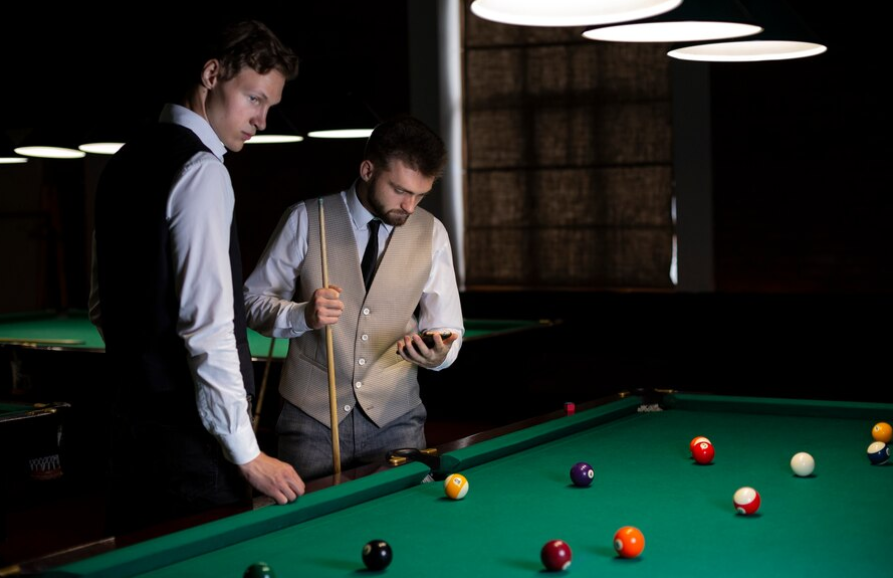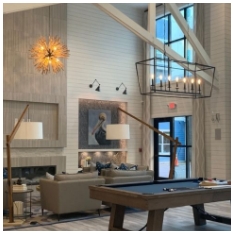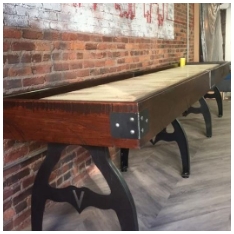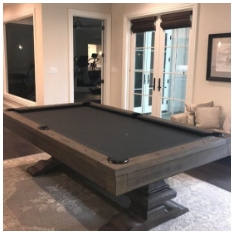When it comes to purchasing or upgrading a pool table, one of the most critical factors to consider is the slate. The slate is the foundation of the playing surface, and its quality significantly impacts the gameplay experience. Different types of slate are used in pool tables, and understanding these variations can help you make an informed decision. In this article, we’ll explore the different types of slate used in pool tables and how they affect performance and durability.
What is Pool Table Slate?
Slate is a natural stone that is often used to create the playing surface of pool tables. It is prized for its smoothness and durability, providing the perfect balance of playability and longevity. Slate ensures a flat, consistent playing surface, which is essential for accurate ball movement.
Most high-quality pool tables are constructed using slate, but not all slate is the same. There are different types of slate, each with its unique characteristics. Understanding these differences can help you choose the right pool table for your needs.

Why Slate is the Preferred Material for Pool Tables
Before diving into the different types of slate, it’s essential to understand why slate is preferred for pool tables. One of the main reasons is its stability. Slate is dense and resistant to warping, which means it can hold its shape over time. This stability ensures that the playing surface remains level, offering a consistent experience for years.
In contrast, tables made with other materials like wood or synthetic options are prone to warping, which can lead to uneven surfaces and a frustrating playing experience. Slate also provides a smooth, frictionless surface, allowing pool balls to roll evenly and predictably, enhancing the accuracy of shots.
Now that we’ve covered why slate is important, let’s look at the different types of slate used in pool tables.
Types of Slate Used in Pool Tables
Not all slate is created equal. Different pool table manufacturers use varying types and grades of slate, which can affect the overall quality and price of the table. Below are the most common types of slate used in pool tables:
1. Brazilian Slate
Brazilian slate is one of the most commonly used materials in pool tables. Known for its excellent hardness and smoothness, Brazilian slate is often considered a premium option in the world of pool tables.
One of the primary advantages of Brazilian slate is its high density. This makes it extremely durable, able to withstand years of use without showing signs of wear. Brazilian slate is also less porous compared to other types of slate, which means it can be cut and polished to a higher standard, providing a superior playing surface.
In addition to its quality, Brazilian slate is available in various thicknesses, typically ranging from ¾ inch to 1 inch, allowing players to choose the best option for their playing preferences.
2. Italian Slate
Italian slate is another high-quality option commonly found in pool tables. Like Brazilian slate, it is highly regarded for its durability and smooth playing surface. The difference lies mainly in the geographic source and the stone's natural properties.
Italian slate tends to be slightly softer than Brazilian slate, but this doesn’t necessarily mean it’s less durable. Many professional pool tables use Italian slate because of its fine grain, which offers exceptional smoothness and precision.
Players who prefer a table with a softer, more cushioned feel may opt for Italian slate, as it provides a different type of ball response compared to harder slates like the Brazilian variety.
3. Chinese Slate
Chinese slate is a more affordable option compared to Brazilian and Italian slates. While it may not have the same level of hardness or precision, Chinese slate is still a popular choice for recreational tables.
The main difference between Chinese slate and its more expensive counterparts lies in its density and quality of finish. Chinese slate is generally more porous, which can lead to a slightly less smooth surface. However, for casual players or those who don’t require a professional-grade table, Chinese slate is an excellent choice due to its lower cost.
Chinese slate is also widely available in various thicknesses, allowing manufacturers to produce more budget-friendly pool tables without sacrificing too much in terms of playability.
4. Synthetic Slate (Slatron)
While technically not slate, Slatron or synthetic slate is often used in budget-friendly pool tables as an alternative to natural slate. Made from a combination of plastic and fiberboard, synthetic slate aims to mimic the properties of natural slate but at a significantly lower cost.
Slatron is lightweight and much easier to transport compared to natural slate, making it a convenient option for home pool tables. However, it does not offer the same level of performance as genuine slate. Synthetic slate is more prone to warping and does not provide the same smoothness, which can affect ball roll and overall gameplay.
For casual players or those with limited budgets, Slatron can be a good compromise. However, for serious players who demand precision and consistency, natural slate remains the superior choice.
Thickness of Slate: Does it Matter?
When exploring the different types of slate used in pool tables, thickness is another critical factor to consider. Slate is typically available in ¾ inch or 1-inch thicknesses, though some custom tables may feature slates that are thicker.
- ¾ Inch Slate: This thickness is standard for mid-range pool tables. While it provides a good balance of durability and playability, it may not be as stable as thicker slates, especially in larger tables.
- 1-Inch Slate: Professional-grade pool tables typically feature 1-inch slate. This thickness offers superior stability and ensures that the table remains perfectly flat for years, even with heavy use.
If you’re serious about pool or looking for a table that will last for decades, investing in a 1-inch slate is worth the extra cost.
Conclusion:
Understanding the different types of slate used in pool tables is essential when selecting the best table for your needs. Brazilian and Italian slates offer superior smoothness and durability, making them ideal for serious players or commercial environments. Chinese slate provides a more affordable option for casual players, while synthetic slates like Slatron are suitable for budget-conscious buyers who don’t require the highest performance.





